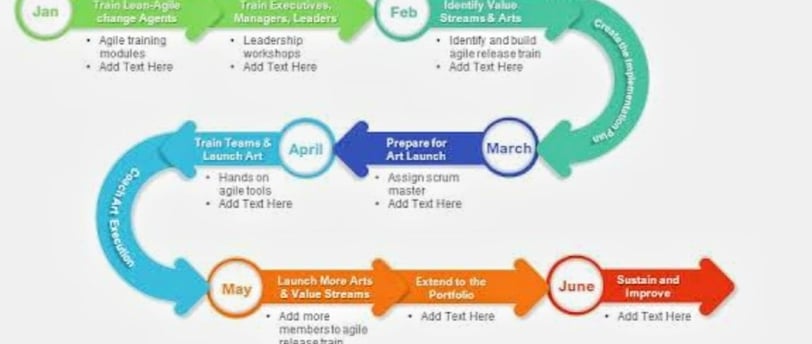Introduction
Implementing the Scaled Agile Framework (SAFe) for leadership can be a transformative step for organizations looking to embrace agility at scale. SAFe provides a structured approach to scaling agile practices, enabling leadership teams to align their strategies, improve collaboration, and drive business outcomes. In this blog post, we will explore the key steps and resources you need to successfully implement SAFe for leadership.
Step 1: Understanding SAFe
Before diving into the implementation process, it is crucial to have a solid understanding of SAFe. SAFe is a framework that helps organizations scale agile practices across multiple teams, departments, and even entire enterprises. It provides a set of principles, practices, and roles that enable organizations to achieve business agility while maintaining alignment, transparency, and governance.
To get started, visit the official SAFe website (https://www.scaledagileframework.com/) where you can find a wealth of information, including the SAFe Big Picture, which provides an overview of the framework's key elements. Additionally, the website offers various resources such as case studies, whitepapers, and articles that can help you gain a deeper understanding of SAFe and its benefits.
Step 2: Training and Certification
To successfully implement SAFe for leadership, it is essential to ensure that your leadership team is well-trained and certified in SAFe practices. SAFe offers a comprehensive training and certification program that covers various roles, including SAFe Agilist (SA), SAFe Program Consultant (SPC), and SAFe Product Owner/Product Manager (POPM), among others.
By investing in SAFe training and certification, your leadership team will gain the necessary knowledge and skills to effectively lead and support agile initiatives at scale. The SAFe website provides a list of certified training providers where you can find courses tailored to different roles and levels of experience.
Step 3: Creating a SAFe Implementation Plan
Once your leadership team is equipped with the necessary knowledge and certifications, it's time to create a SAFe implementation plan. This plan should outline the specific steps, timelines, and resources required to implement SAFe across your organization.
Consider starting with a pilot program involving a small number of teams or departments. This will allow you to test and refine your implementation approach before scaling it up. The SAFe website offers guidance on creating an implementation plan, including recommended practices, tools, and templates.
Step 4: Establishing Agile Release Trains (ARTs)
At the core of SAFe is the concept of Agile Release Trains (ARTs). ARTs are long-lived, cross-functional teams that deliver value to customers in a predictable and iterative manner. Establishing ARTs is a critical step in implementing SAFe for leadership.
Ensure that each ART has a dedicated Release Train Engineer (RTE) who acts as a servant leader, facilitating the flow of value and ensuring alignment across teams. The SAFe website provides detailed guidance on establishing and managing ARTs, including best practices for backlog refinement, iteration planning, and program increment (PI) planning.
Step 5: Continuous Improvement and Learning
Implementing SAFe for leadership is an ongoing journey of continuous improvement and learning. Encourage your leadership team to embrace a culture of experimentation, feedback, and adaptation. Regularly review and refine your SAFe implementation plan based on feedback and lessons learned.
Stay connected with the SAFe community by attending conferences, webinars, and local user groups. Engage in knowledge sharing and collaborative discussions to gain insights from other organizations that have implemented SAFe successfully.
Conclusion
Implementing SAFe for leadership requires a comprehensive understanding of the framework, training and certification for your leadership team, creating a SAFe implementation plan, establishing Agile Release Trains, and fostering a culture of continuous improvement. By following these steps and leveraging the resources available on the SAFe website, you can set your organization on a path to achieve agility at scale and drive business success.
Remember, implementing SAFe is not a one-size-fits-all approach. Tailor the framework to suit the unique needs and context of your organization, and be prepared to iterate and adapt as you progress on your SAFe journey.




